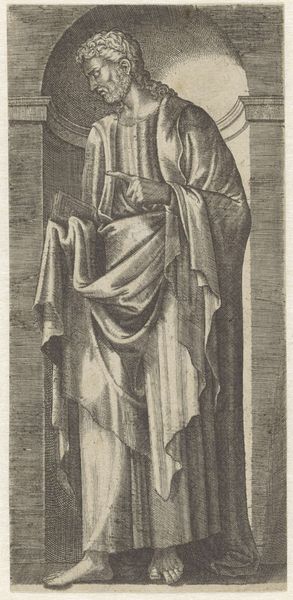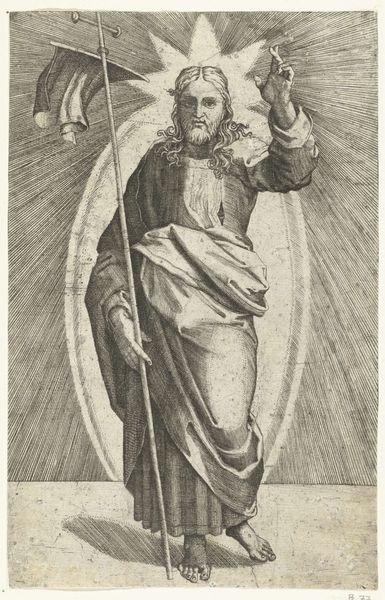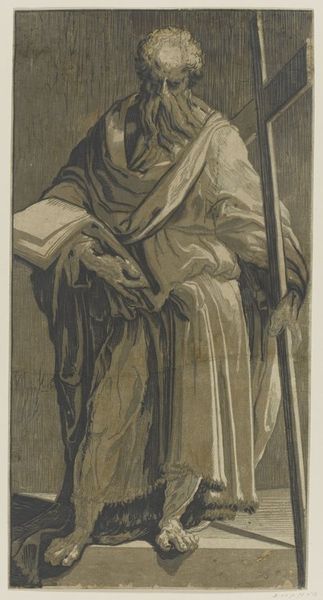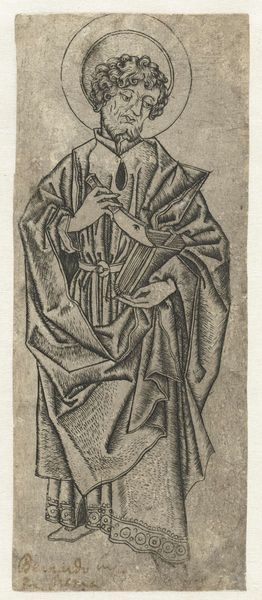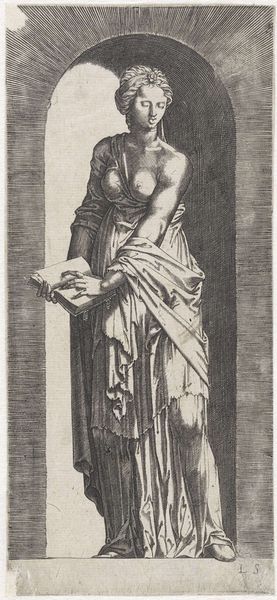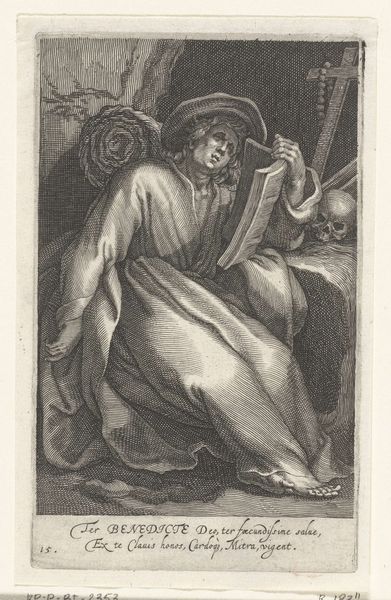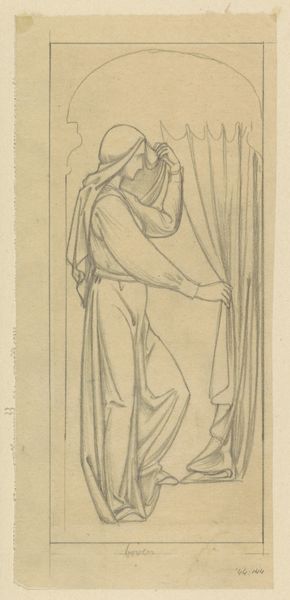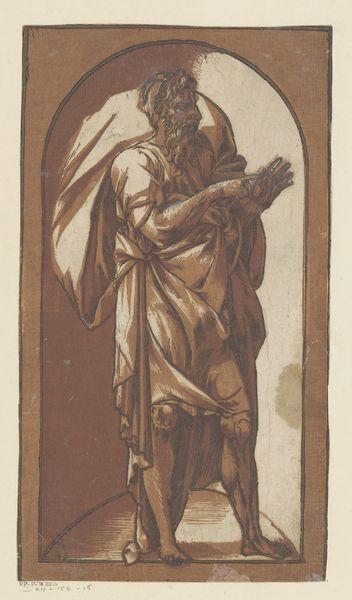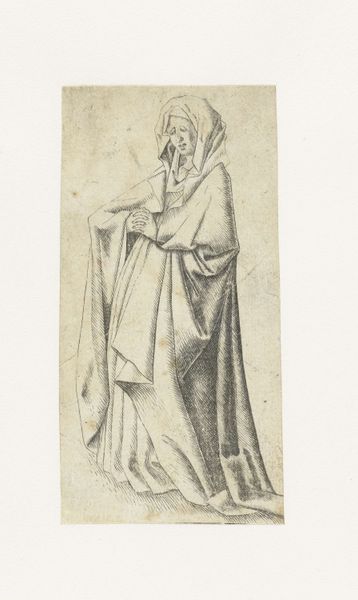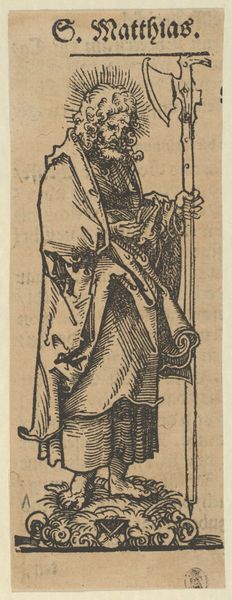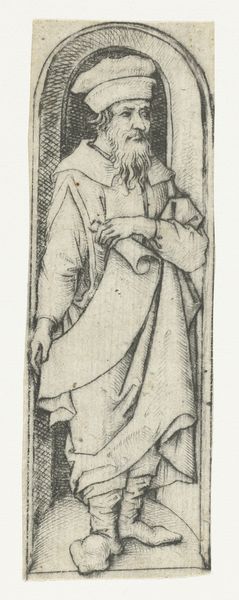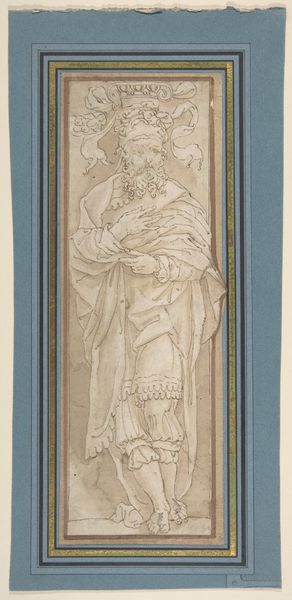
drawing, pencil
#
portrait
#
drawing
#
art-nouveau
#
dutch-golden-age
#
pencil sketch
#
figuration
#
pencil drawing
#
geometric
#
pencil
#
symbolism
#
portrait drawing
#
modernism
Copyright: Public Domain: Artvee
Editor: This is "De Bouwmeester," or "The Architect," a pencil drawing by Richard Nicolaüs Roland Holst from 1918. There's a somber, almost monumental feel to it. He holds a model building and the composition has these very strong geometric patterns in the background. What do you see in this piece? Curator: I see a fascinating intersection of art, labour, and societal values emerging in the wake of the First World War. Holst was deeply invested in socialist ideals, and this work presents a powerful figure of the architect, not merely as a builder, but as a shaper of society. Consider the architect's tools and the geometric forms - do you see how they create an ideal vision of order against the backdrop of a world in turmoil? Editor: Yes, the architect's steady gaze and the almost classical drapery give him a sense of authority and timelessness. Is Holst making a statement about the power of creation during a time of destruction? Curator: Precisely. Holst is drawing from the rich history of Dutch art while consciously responding to the societal shifts of his time. The symbolism employed elevates the role of the architect beyond simple construction. It posits that through careful design and execution, they contribute to building a more equitable, harmonious future. Note his stance - not above us, but among us, yet elevated by his purpose. How does that position the figure within the social landscape of the time, do you think? Editor: It's like he's suggesting that true progress comes from a blend of artistic vision and social responsibility. Curator: Exactly. Holst invites us to contemplate how art can participate in shaping cultural and political landscapes, offering a vision for a more just and balanced future through conscious design. Editor: I see the piece very differently now, it’s much more than just a drawing of an architect. Thank you! Curator: And thank you, these kinds of dialogues remind us to examine our preconceptions, biases, and personal connections to art in an effort to explore more egalitarian cultural perspectives.
Comments
No comments
Be the first to comment and join the conversation on the ultimate creative platform.

